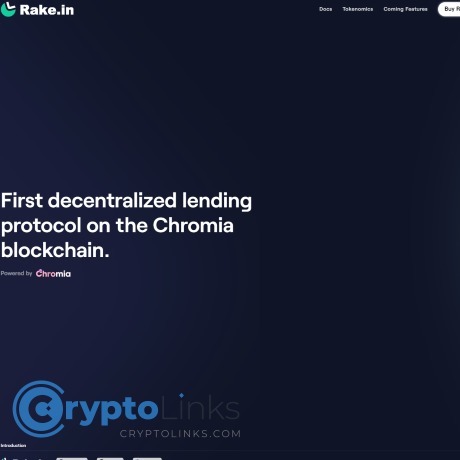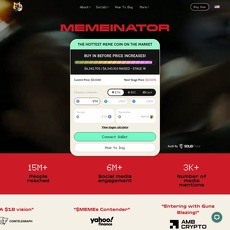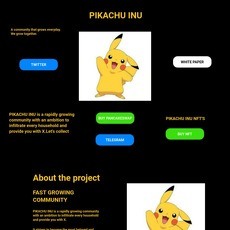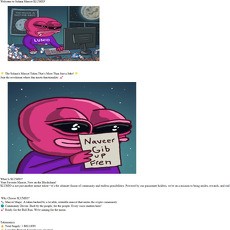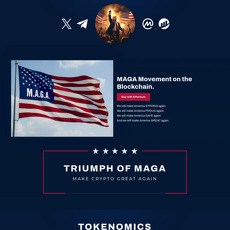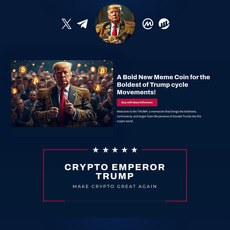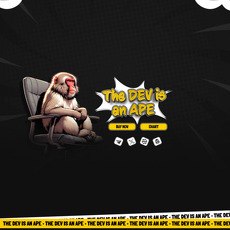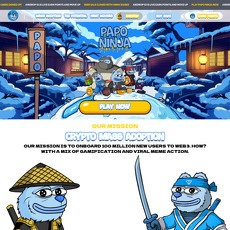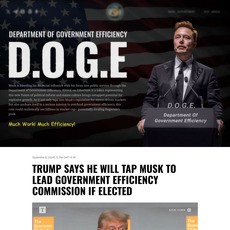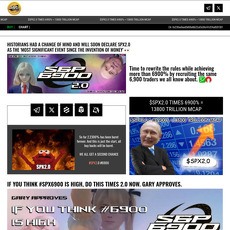Rakein Review
Rakein
rakein.io
If your website is on the scam list and you think that you are not a scammer, contact us. After you provide us with all the proof that you are in Crypto World with good intentions, we will delist you. Usually, you get in this category because you are hiding your team, you have a bad reputation(you are tricking, deceiving, scamming people), and you haven't got a written project whitepaper or is a shitty one....
Their Official site text:
Introduction to Rake.in
Rakein protocol is the first lending protocol that enables users to lend and borrow a diverse range of cryptocurrencies and NFT using variable interest rates on the blockchain of Chromia.
In addition to the typical features seen on other protocols like Aave, Rakein includes notable distinguishing features such as Multiple pools and NFT collateral. What is more, there is no gas fee for our end users.
Rakein leverages a native token – RAKE – that provides holders with governance. RAKE can also be staked for insurance to earn protocol fees and RAKE rewards when DAO is introduced.
Roadmap
Good to know: The roadmap relies heavily on the Chromia mainnet launch time.
2022 Q2
Website Creation
Launch of MVP Dapp on Chromia Testnet
Set-Up of Communication Telegram Group
2022 Q3
NFT Lending
Presale Round
IDO
Airdrop Distribution (Round 1&2)
CoinMarketCap & Coingecko Listing
2022 Q4
Official Chromia Oracle Partnership
Official Launch of Dapp on Chromia Mainnet
Introduction of Investors
2023 Q1
Protocol Fees Return
Exchange Listing
RakeIn Protocol V2 - Lite Paper
Disclaimer
This litepaper does not constitute investment advice, does not include any promises, offers, guarantees, representations or warranties.This article is subject to change but is not guaranteed to be up to date.
Abstract
Here, we present RakeIn v2: a semi-permissionless lending protocol built to help users lend and borrow more risky and profitable tokens than ever before. The purpose of this lite paper is to describe how RakeIn works at a high level and highlight new features and innovations that help to set it apart from other popular lending protocols, like Venus and AAVE.
1. Getting Start - RakeIn V1
The original vision of RakeIn was lending protocol that enables users to lend and borrow a diverse range of cryptocurrencies and NFT using variable interest rates on the blockchain of Chromia.The previous version migrated from AAVE as follows:
Lenders supply tokens (provide liquidity) to a pool of assets, and borrowers take these tokens (borrow liquidity) from that same pool. Instead of each party interacting directly with the other, they interact with the communal pool.
The pool - managed by smart contracts on chromia blockchains - algorithmically and dynamically determine the interest rates lenders earn and borrowers pay. In other words, the interest rates are calculated automatically with no intermediary party needed, thus significantly reducing costs.
You can find out the details in https://docs.rakein.io/introduction/introduction-to-rake.in
The peer-pool lending model is still very important in V2, with innovative design to address the unsatisfied lending requirement.
2. Lending's Impossible Trinity
2.1 Security
Over-collateralized loans are the dominant paradigm for DeFi lending. An over-collateralized loan means that in order to take a loan from one MM, one must deposit tokens of higher value as collateral. Not only that, but the borrower must make sure they maintain a proper amount of collateral for the entire lifespan of the loan.
However, If one of the assets were to drop in price faster than liquidators can react, every user and every asset is affected by this. So the risk to the platform is based on the risk level of the riskiest asset listed on the platform. This risk increases with every extra asset that is added, leading to a very limited choice in assets on most platforms.
On 2021 May 18th, Venus Protocol suffered a huge $200M+ in liquidation. This was due to price manipulation of the governance token (XVS) which led to a $100M+ of bad debt accumulation.
Mango Markets, a decentralized finance trading platform on the Solana blockchain, suffered a hack worth approximately $112 million in digital assets utilizing a technique known as oracle price manipulation.
2.2 Liquidity
Peer-to-Pool lending model is a very common and popular method amongst DeFi lending applications. Unlike traditional lending where lenders and borrowers need to be matched and then form contracts, both parties instead interact with a common asset pool. Lenders' and borrowers' interest rates are automatically determined by each asset's borrowing to lending ratio.
However, current popular lending protocols usually share one big lending pool to seize the liquidity as much as possible, which leads to security issues. What is more, since they can't distinguish the borrow's collateral tokens, all the coins lent out share the same low interest rates, despite the fact that they are based on different collateral tokens.
2.3 Interest Rate
Comparing to the risk the lender is facing, the interest rate is quite low. Check out the interest rate of famous Lending Platform on 2022-11-01:
Since all the USD shares the same collateral, it is hard to have the distinguished interest rate even if lender is willing to take more risk.
2.4 Impossible Trinity
Based on all of these facts, Liquidity, Security and Interest Rate can't be all high in the same lending market.
Here is Rating Chart of some famous lending platform:
Dimension
AAVE
Compound
Kashi
Rari
Euler
Security
Medium
Medium
High
Low
Medium
Liquidity
High
High
Low
Medium
Medium
Profit Rate
Low
Low
Low
High
Medium
As we can see, there is no platform which scores high in 3 dimensions at the same time.
3. RakeIn Protocol V2
First, let's analyze what a good loan looks like from the perspective of Lender and Borrower.From Lender's perspective, the best case is that there is no risk but high return. But as we all know, this is impossible. Therefore, Lenders can accept the benefits that match the risks. So Lenders hope different collateral corresponds to different yields.
From Borrower's perspective, he wants to obtain the corresponding liquidity of the asset, but the current lending platform can only use very few assets as collateral. Most platforms are unable to add collateral types quickly considering the risk, even though borrowers are willing to provide higher interest rates and higher liquidation threshold as compensation.
3.1 RakeIn V2 Solution
3.1.1 Protocol Architecture
Lending Market : It is similar to the regular lending pool, with the following characteristics:
A market will be assigned a risk level according to the risk level of collateral. According to the barrel effect, the collateral with the highest risk will determine the risk level of a market. Order the markets with the associated risk level, then we call the less risky markets upper-class markets. These risk-ranked markets make up Market Chain.
Interest rate in the market is determined according to the usage rate of funds in this market. (Follows the same pattern in AAVE and RakeIn V1)
However, market liquidity is not open to all collateral in the market. According to certain rules, the maximum amount of liquidity will be configured for each collateral cabin.
Market Group
The group is composed of multiple markets, forming a market chain. The assets in the group will act as collateral together during liquidation.
At present, there will be only one official group. In subsequent versions, we will allow the creation of groups in public to facilitate the personalized lending markets.
Collateral Cabin
For each collateral type, there is the maximum allowable borrow amount maxBorrowAmountUSD. This setting is initialized by the configuration of the market. Once the collateral is identified as stable, the DAO can increase this value. However, it cannot exceed the maximum collateral borrow amount in the market settings.
Here is the calculation logic of maximum allowable borrow amount for one collateral of one borrower:
Calculate CollateralPowerPoint needed by preventing liquidation in lower-class market
Max(maxBorrowAmountUSD, Sum(CollateralValue*ltvFactor) - totalDebtValue - (CollateralPowerPoint Needed by lower-class market))
maxBorrowAmountUSD is urgently reduced in the following cases:
The collateral cannot be liquidated in time
The DAO determines that the collateral is at risk and conducts emergency shutdown operation
Once the collateral risk level is lower than the minimum risk level requirement by the market, the cabin will enter the shutdown process to ensure the overall risk safety of this market.
Vault
Lenders can directly invest their funds in the chosen market, or they can diversify their investments through a treasury which will follow PCL pattern( protocol control liquidity), getting extra incentive from protocol comparing with individual lending.
For example, a lender who owns USD 1000USD needs to invest in Market A and Market B. He can directly invest USD 500USD respectively in these two markets, or he can do so through a vault with investment strategy, so that the vault can decide the market distribution of USD 1000USD according to the change of interest rate to obtain higher profits. Vault functionality will be implemented in RakeIn V3.
Liquidation
For one borrower, the liquidation will be performed in several markets order by the market risk level. Less risky markets(upper-class markets) will be evaluated for liquidation first, then the risky markets. The "unused" collateral value can be measured in the next market liquidation calculation, to help borrowers to keep the collateral.
To address the collateral value derived from upper-class markets, CollateralPowerPoint is introduced:
CollateralPowerPoint= CPs from upper-class market and CPs in this Market
CPs in this Market = Sum(CollateralValue*liquidationFactor)
Only assets with risk levels higher than minimal risk levels can be treated as collateral in this market.
Only if the loan is more than CP, the liquidation is triggered.
If the upper-class market triggers liquidation, none of CP will be derived, and the liquidation calculation on lower-class market will continue to go on.
All these values are priced in USD.
3.1.2 Collateral Cabin Lifecycle
Semi-permissionless Collateral Listing
Based on risk level of collateral, borrower can list the collateral in certain market(Innovation Market).
DAO needs to pre-approve the collateral list. At the early stage of the protocol, dev team will take the responsibility of pre- approving the collateral list.
Freeze cabin in these cases:
The collateral cannot be liquidated in time.
The DAO determines that the collateral is at risk and conducts emergency freeze operation.
Shutdown cabin in these cases:
The collateral has serious risk issues (like what happened in GALA, LUNA, FTT), which become inappropriate in this market.
Once the collateral risk level is lower than the minimum risk level requirement by the market.
3.1.3 Cabin Configure Parameters
Parameter
Value
ltvFactor(Loan to value ratio)
Borrow X% against your collateral.
liquidationBonus
% of your liquidated collateral to incentivize liquidators.
liquidationFactor
A multiplier representing the liquidation threshold. For example, liquidationFactor of 0.9 means that if the amount you borrow is worth (at least) 0.9 of your collateral, your position is subject to liquidation. Must follow: collateralFactor <= liquidationFactor< 1.In RakeIn V2, the liquidation is very complex, please check out 3.1.1 Liquidation section.
minborrowAPR
Borrow APR when Utilization = 0%.
reserveFactor
A share of the protocol's interests to treasury account as reserve for the ecosystem.
maxBorrowAmountUSD
the maximum allowable borrow amount for all the borrower with this collateral
3.1.4 Asset Risk and Built-in Markets
The risk is evaluated with risk level number Major-Minor. Major numbers correspond to the Markets, smaller numbers mean less risk.
Built-in Major Risk Number
10 : Gold Risk Level, like BTC, ETH, BNB
Well-known and very trustful assets
Introduced by DAO
Built-in Market : Gold Market
20 : Silver Risk Level, like UNI, LINK
Well-known and top 30 MCAP assets
Introduced by DAO
Built-in Market : Silver Market
50 : Launchpad Risk Level, like CHR
Supported by chainlink oracle and pre-approved by DAO. (In the future, staking RAKE can make an endorsement of launching one asset and share the profit of these collateral lending)
This pre-approved list will have 100+ tokens to cover the most well-known tokens, so that is called Semi-permissionless. Anyone can add the asset listing in the pre-approved list to the market as collateral.
The pre-approval criteria is based on the MCAP and Trading Volume of this asset in Dex and Cex.
Built-in Market : Launchpad Market
100 : Default Risk Level, like RAKE
Built-in Market : Not supported now
Minor Risk Number
In V2, to make it simple, all collateral share the same number. It may change in the future.
3.1.5 Market Interest Rate Model
In specific markets, the interest rate model is similar to AAVE, which is specified in V1 document.https://docs.rakein.io/token-lending/interest-rate-model
3.1.5.1 Market Interest Multiplier
Different markets have different collateral risk levels. There is a market interest rate multiplier rule:
Gold Market Interest will be set as baseline.
The other market will be set as X times as baseline.
Currently, Silver Market is 1.5 times, Launchpad is 4 times. It can be changed by DAO, and in future it can be adjusted according to fund utilization rate in the market.
3.1.5.2 Multiple RakeIn Interest-bearing Derivative Tokens
rTokens, such as rDAI or rUSDC, are interest accumulating tokens that continuously go up in value as you hold them. They represent a share in a lending pool that grows in size as borrowers pay interest into them. rTokens can be traded, used as collateral, composed by developers into Defi Legos.The rTokens' value is pegged to the value of the corresponding deposited asset at a 1:1 ratio, and can be safely stored, transferred or traded. All interest collected by the rTokens reserves are distributed to rTokens holders directly by continuously increasing their wallet balance.RakeIn V2 has several markets, so there are several versions of rTokens. It is hard to unify them into one token, since they represent different collaterals and with different interest rates.
3.2 Why RakeIn V2?
When it comes to lending and borrowing in DeFi, there are numerous options. Regardless of which protocol you choose, each possesses its own set of risks and benefits.
There is no perfect lending solution. Since RakeIn isolate the liquidity into markets, although Collateral Power Points helps borrowers to inherit the collateral power from the upper-class market, the liquidity is still not as good as one big pool like AAVE.As to security, the collateral cabin is isolated. However, RakeIn introduces a semi-permissionless mechanism, the security is not good as pure isolation protocol Kashi.
Let's put RakeIn into the competition chart.
Dimension
AAVE
Venus
Kashi
Rari
Euler
RakeIn
Security
Medium
Medium-
High
Low
Medium+
Medium+
Liquidity
High
High
Low
Medium
Medium
Medium
Interest Rate
Low
Low
Low
High
Medium
High
Therefore, we have compiled a list of reasons why lenders and borrowers prefer using RakeIn:
3.2.1 Security
3.2.1.1 Isolated Lending Cabin
As we demonstrated, the risk to the platform is based on the risk level of the riskiest asset listed on the platform. Each collateral has the max borrow amount corresponding to their risk level.Some collaterals will be very stable and safe, others are highly volatile assets with low liquidity. Because these are isolated cabins, risk is limited to individual cabins and interest rates will reflect that risk. Higher risk market will attract fewer suppliers, pushing up the interest rate.
3.2.1.2 Lender Chooses Collaterals For Lending With Corresponding Profit.
The lender has to choose the market to lend, and each market is associated with collateral of a certain risk level. And any loan happening in this market will be covered by collateral with the same risk level or upper-level.
3.2.2 Liquidity
3.2.2.1 Market Coverage
Some protocols are splitting the liquidity into lending pairs, which are too isolated, so that each pair has quite low liquidity. In RakeIn, the collateral with the same risk level will share the same liquidity as long as the collateral's max borrow amount is not reached.
3.2.2.2 Anti-liquidation in Market Group
Although the max borrow value is strictly limited to the maxBorrowAmountUSD for each collateral, once the loan is made, the maxBorrowAmountUSD limit will not trigger the liquidation. CollateralPowerPoint inherits from the upper-class market, which is very helpful for the borrowers to avoid frequent liquidation.
3.2.2.3 Semi-permissionless
As described in previous chapter, RakeIn allows quite many tokens to be listed in Lauchpad market, as long as it passes DAO evaluation. This mechanism works only with the following preconditions:
The lenders accept the risk considering the much higher profit rate.
The borrowed amount with this collateral is restricted to avoid risk spreading.
3.2.3 Interest Rate
Better Rates for Lenders. We believe that rates in RakeIn will be more attractive than other lending protocols since the rates can get much higher when there are higher risky assets.
3.2.4 Highlighted Features
Highlighted Features For Lender
Possible higher interest rate if corresponding risk accepted
The collateral is in a cabin to restrict the max borrow value to avoid the risk spreading.
Highlighted Features For Borrower
More types of collateral can be used despite the higher interest rate.
Liquidity is still quite good since the market count is very limited.(only 3 official markets)
The loan is covered by all markets' collateral.
4. RAKE Economics
4.1 Protocol reserve
The Rake.in protocol allocates a share of the protocol's interests to treasury account as reserve for the ecosystem. This reserve is used to sustain the RAKE holders, and pay blockchain hosting fees (For Chromia) and future development costs. It is made out of various assets including RAKE.Reserve factor is calibrated based on the overall risk of the asset. Stablecoins are the less risky assets with lower reserve factor while volatile assets hold more risk with a higher factor.
The details of reserve allocation:
Development Funds
50%
Reserved for RAKE Stakers
40%
Safety Insurance
10%
4.2 Governance
RakeIn will broadly follow the governance model pioneered by AAVE. The protocol will be managed by holders of RAKE. RAKE tokens will represent voting powers of the protocol software. Holders with enough RAKE tokens will be able to make a formal proposal for change on the protocol. Token holders will then be able to vote on the proposal themselves or delegate their vote shares to a third party. Examples of the kinds of decisions token holders might vote on include proposals to alter include:
The risk level of an asset
Collateral and borrow factors
Price oracle parameters
Interest rate model parameters
Reserve factors
Governance mechanisms themselves
Acknowledgements
With special thanks to RakeIn Community and $RAKE holders.
Introduction of NFT Lending
Today, Decentralized finance (DeFi) opens up the world of finance to the everyday person, where Lending is playing important role. With lending, it’s possible to borrow money without the headache and hassle of traditional loans. But the most of lending LTV is contributed by Token lending protocols, such as AAVE, Compound, MakerDAO…
Non-fungible tokens () are a red-hot asset class in crypto, with billions of dollars in value traded each month. NFT market has the potential to be worth over $13 billion by the end of 2027, according to a report from research firm. But NFTs aren’t only for buying, selling and holding. Just like other assets, they can be part of more complex and lucrative financial arrangements. If you want to make money from NFTs without selling the ones you own, you need NFT lending.
But why NFT lending is not as popular as token lending?
First of all, the NFT market is far more illiquid. While you can sell bitcoin pretty much instantly, It could take months until someone buys your NFT. It is quite hard to liquidate the NFT in time to protect the lender’s assets.
Secondly, when you sell your NFT, you have to sell the whole thing. When you buy your NFT, you also have to buy the whole thing. Lots of people don’t want to part with their NFTs forever — not even parts of it.
At last, NFT price is not easy to be evaluated. It is raising and dropping dramatically fast, except some blue-chip NFTs, so no oracle is providing the fair NFT price in time. Never mention that NFT price can be manipulated by some whales easily.
Chromia is the blockchain with lots of Gamefi dapp, that means NFT liquidity is a MUST facility to enable the whole ecosystem liquidity. Unlike MakerDAO with collateralized debt position (CDP) structure and NFTfi which is popular peer-to-peer NFT lending platform, RakeIn provides peer-to-pool NFT lending for customizable loan terms.
Peer-to-Pool NFT Lending
Peer-to-Pool Model
Step 1 : The NFT holder chooses the candidate NFT across several NFT collections to put into the draft.
Step 2 : The borrower specifies the loan terms, including borrow APY, Loan period, target coin type, target coin amount and so on. Place the loan offer in the public loan market, where the lender can navigate and search the offers. Let’s say, one borrower gives an offer with target of 1,000 CHR.
Step 3: The lender finds out which loan offer is profitable with the consideration of the risk, then lends 400 CHR to this loan offer. Now we have 1,000–400=600 CHR quota left in this loan offer. Once 400 CHR is accepted, the interest will be calculated immediately for this lender.
Step 4: Another lender also likes this profitable loan offer, and he’d like to invest more CHR, however he can only lend 600 CHR, because after 600 CHR lending, the offer reaches the target and is closed for the new incoming lender.
Loan Status Transition
The borrower should repay the debt before the loan maturity date, and only borrower can repay before the maturity date. Once the loan reaches the maturity date, the loan becomes defaulted. Then the liquidator will come in and liquidate to get the NFT collaterals. To encourage the lenders, the mortgage rate of the loan should be competitive, because it is important consideration factor of the lenders when deciding the lending or not.
By the way, before the first occurrence of the lending, the loan offer can be canceled by the borrowers.
Characteristics
Rakein NFT lending has some common basic characteristics including:
Target Amount is the maximum amount of target asset type this loan can borrow, when the target is achieved, the loan status becomes filled, which leads to no more lending allowed for this loan offer.
Target Asset Type is the type of asset the borrower wants to borrow in this loan
The coupon rate(APY) is the rate of interest the bond issuer will pay on the his/her lending amount, expressed as a percentage.1 For example, a 5% coupon rate means that bondholders will receive 5% x $1,000 lending value = $50 at the maturity date. Currently the interest will only be paid on the maturity date.
The maturity date is the date on which the loan will mature and the loan borrower will pay the lender the actual lend value of the loan and the interest.
The period is the duration from the first lending time to The maturity date (when the borrower should repay the loan)
Evaluation price is the collateral price at which the loan issuer evaluated. It is just as the lender's reference.
bToken
bToken is the original concept in RakeIn protocol NFT lending, which is quite different than the rToken, bToken is generated and accumulating the interest for each Loan! So it is more complex and requires more attention, of cause, it is more profitable and with more fun.
Imagine this NFT lending process:
Deposit USDC in the RakeIn vault.
Accept a loan offer with NFT collateral, and lend 1000 USDC to this loan.
The interest is accumulating the value with the promised the APY from the loan borrowers.
After the promised loan maturity date, the lender can get back USDC with interest by burning the bToken.
Usually the period of term loan is more than 1 week, which means, you can do nothing but just waiting for the loan mature. The liquidity is locked again. So between Step 2 and Step 4, we introduce the bToken, the proof token to allow the lender to exchange or sell to get the liquidity even the loan is not matured.
So after the loan tokenization, the process looks like:
Deposit USDC in the RakeIn vault.
Accept a loan offer with a NFT bundle collateral, and lend 1000 USDC to this loan.
Received 1000 bToken for loan of this NFT collateral.
The bToken amount is accumulating the value with the promised the APY from the loan borrowers.
After the promised loan expiration date, let’s say, you have 1010 bToken now. The lender can get back USDC with interest by burning the bToken.
The interesting part of the NFT lending is that the loan is with fixed term period and high APY. So the bToken will be extremely useful for the loan with good NFT collateral and high mortgage rate. When Defi is prosperous, the lender hardly holds a loan lending with such long time, he needs the liquidity to invest other assets in the middle of the loan. Then bToken trading solves the problem.
What is more, as a kind of token, bToken is ready for interoperability between other Defi protocols. As a lending protocol, RakeIn hopes to be the keystone of the Chromia Defi, so the interoperability of the locked liquidity is important to us.
This concept is quite similar with Bond. Yep! Actually the team is very interested to extend the concept to monetizing other assets as well. We will introduce more when we have more insights.
$RAKE
Introduction
RAKE is Rakein's native governance token. And RAKE holders will also control part of the protocol fees with DAO(
)
In the initial stage, we will hold a private round for startup funding, then conduct an IDO to launch the liquidity supplying on DEX.
The majority of the supply will be distributed to community members by kinds of security & liquidity incentives.
There are 1 Billion RAKE tokens. RAKE’s distribution is as follows:
Distribution
Total supply: 1,000,000,000 RAKE
Community: 55%
Security & Liquidity Incentives: 40%
Reserved (DAO treasury/Incentives/Development): 14%
Airdrop : 1%
Core team: 25%
Presale Round: 5%
IDO: 5%
Future Strategic investors: 10%
Lockups
Presale round investors have a 1-year monthly vesting schedule.
The team has a 2-year monthly vesting schedule.
There is no lockup for IDO/Airdrops participants.
Circulating supply
Rakein's security & liquidity mining program is the main driver of circulating supply, especially early on. We will provide a projection of the RAKE circulating supply soon. The mining details will be declared when the mining feature launched. And DAO can change the parameters when DAO launched.
Protocol fees
Blockchain fee
In Chromia, users pay blockchain fees indirectly:
The dapp pays to nodes hosting fees. Fee is paid from dapp token account on a daily basis and depends on computational resources requested by the application and used data volume.
The dapp itself can collect fees from users according to its own policies. This means that there’s no system-wide fee policy for users. Dapp developers are free to implement any policy they want.
In our scenario, Rake.in protocol reserve will pay hosting fees. The end user will not need to pay any gas fee.
Protocol reserve
The Rake.in protocol allocates a share of the protocol's interests to treasury account as reserve for the ecosystem. This reserve is used to sustain the DAO, and pay blockchain hosting fees and future development cost. It is made out of various assets including RAKE.
Reserve factor is calibrated based on the overall risk of the asset. Stablecoins are the less risky assets with lower reserve factor while volatile assets hold more risk with a higher factor.
The details of reserve allocation:
Core Team(Blockchain hosting fee, Development)
65%
reserved for DAO
35%

